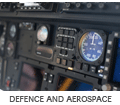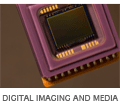Three engineering students were gathered together discussing the possible designers of the human body. One said, "It was a mechanical engineer. Just look at all the joints." Another said, "No, it was an electrical engineer. The nervous system has many thousands of electrical connections." The last one said, "Actually it was a civil engineer. Who else would run a toxic waste pipeline near a recreational area?"

Nvidia and ARMPosted in Industry News on August 18, 2008 by Administrator It has been a bit over two years since the Nvidia license was announced. At the time we were promised high definition video and high performance chips with a graphics focus. It takes a couple of years for a new licensee to get their feet under the table, so it's a good time to have a quick look at the results. This video shows some of the technology at work: It certainly looks compelling. From the specs, it can drive an large HD display as well as a Blu-ray player. Another video is (HTC Touch Diamond) showing the Opera browser. Nvidia has recently named their ARM line 'Tegra'. This is a 700MHz ARM11 MPcore (multi-core CPU) with high-end graphics capability. Support on the web site looks weak, and it seems to be aimed at Windows. The HTC Advantage is one consumer product I can see with this technology. It uses Windows too. The target market seems to be tier 2/3 Asian manufacturers of electronic gadgets. Nvidia sees its competition as the Intel Atom, but this is a strange choice. Sure, Tegra looks great against the Atom - 1/10th the size and 10th the power, they claim. But most ARM SOCs look good against the Atom. How does it stack up against TI's OMAP3530, for example? Surely this is the real competition - no one in their right mind is going to put Atom into a small mobile device. The focus on Windows perhaps just reflects the market they are in - as reported on Linux devices: Asked about future Linux support, NVidia Spokesperson Andrew Humber replied, "Market demands will always dictate the direction in which we take a product, and this is true of all of NVidia's businesses. However, at this time we are focused entirely on Windows Mobile and Windows CE."This is in strong contrast to both Intel and TI, who go to great lengths to support Linux on their products. Is Nvidia persuing the right strategy here? There is no need to argue with Intel about the merits of using ARM versus x86 in mobile devices - that argument was surely won years ago. And the focus on Windows (while it has advantages in concentrating Nvidia's limited resources into a single platform) plays into Intel's 'we are x86' story, and allows people to pidgeon-hole Nvidia into a customer base with limited software expertise and little chance of producing an iPod-killed. Could Nvidia aim higher? BinaryPosted in Uncategorized on August 14, 2008 by Daniel Keis There are 10 types of people in this world....... Those that understand binary and those that don't. X-Plane to the rescuePosted in Uncategorized on August 12, 2008 by Andre Renaud
Light Bulb?Posted in Uncategorized on August 07, 2008 by Daniel Keis Question: How many Software Engineers does it take to change a light bulb........? Answer: None. Its a Hardware problem. |




